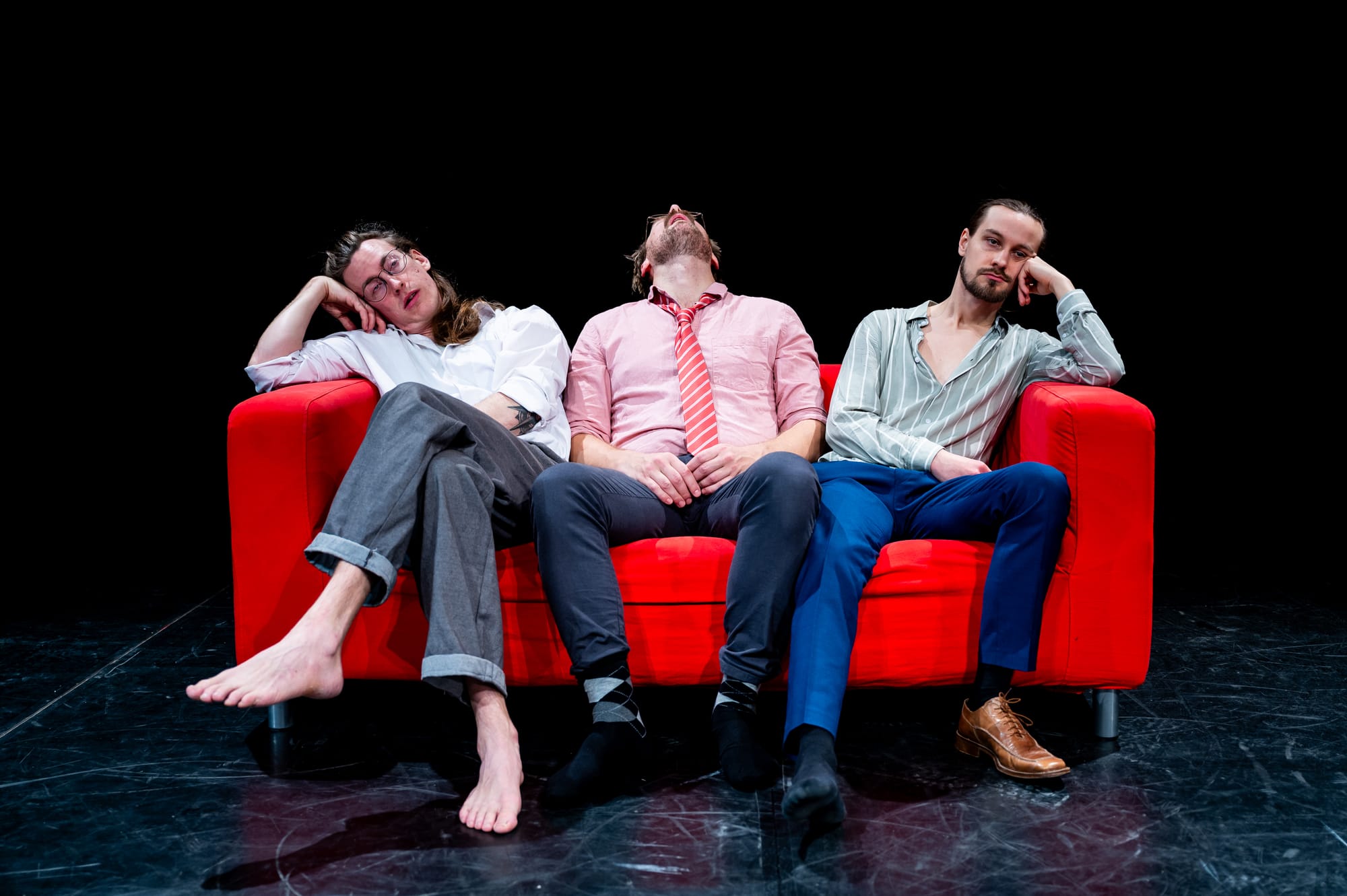On Nordicness and Contemporary Nomadism: Interview with Jakob Jacobsson

The Nordic Council is a trio of artists from Finland, Iceland, and Sweden (Merri Heikilä, Bjarni Árnason, and Jakob Jacobsson), who have been creating contemporary circus shows about Nordic identities and Nordic themes since 2017.
The aesthetic and ethos of their creations – Three Men from the North and Happy Hour – can be described as a blend of self-referential humour, witty reworkings of age-old stereotypes, and subversive reimagining of (mostly) Nordic social mores. Be it Nordic masculinities, Scandinavian drinking culture, or awkwardness-powered social encounters, the themes traversing their works are treated with the blunt sincerity specific to Nordic humour and the unique eccentric expression that the three artists have developed.
The Nordic Council performances present subtle dramaturgy, paced to accommodate the fine-tuned character construction – a memorable bunch of relatable, recognisable, and heart-warming figures. Precise writing and careful timing of comedic moments follow the characters’ antics through sets and scenography simultaneously reminiscent of cold Scandinavian landscapes and ‘90s disco parties. As a company, the trio is an interesting example of contemporary nomadism and adaptability in circus – each works from different countries and is active in other projects, creations, or development and educational programmes.
Curious to hear how it all comes together, how sustainable it is, and, more importantly, what are the main creative drivers in the collective, and what’s so Nordic about their work, I sat down with councilman Jakob Jacobsson come, on the occasion of their Happy Hour premiere in DYNAMO, Denmark.
This interview is part of the CIRCUS FROM THE NORTH series in which we engage with this rich and exciting region and its emerging aesthetics within circus creation.

Elena Stanciu: Jumping right in—what brought The Nordic Council together?
Jakob Jacobsson: In short, circus school and our sense of humour. Being in an international circus school in Europe makes you aware of idiosyncrasies from your home culture. We found a shared sense of humour, which at first inspired us to do small things together. We did little acts, supported each other, we made microscopic creations for school assignments. That led to the idea of making a full show.
ES: Does your connection also come from the school’s approach to teaching creation and facilitating how students find their artistic persona?
JJ: We could have made this company come from different schools, but it certainly helps to have the same artistic vocabulary. Even if we sometimes disagree, we understand how to formulate opinions so that others understand. We've also worked with the same directors, at school, so the specific toolboxes we were given were the same. This eased our communication about creation in a quite intuitive way.

ES: How would you describe your artistic identity and creative model as a collective, today? What makes the Nordic Council Nordic?
JJ: Our collective Nordic heritage is both what makes us the Nordic Council, and it is the core of our identity. Artistically it is what sets us apart—our sense of humour, our aesthetics. In school, we realized it was exactly this Nordicness that we had in common. It was a strong base for creation, as something shared, rather than something uniquely Swedish, Finnish, or Icelandic. Playing with both similarities and differences within this umbrella context of Nordic identity is very exciting.
ES: You mentioned aesthetics as a mark of Nordicness—can you elaborate?
JJ: I think we tap into a certain aesthetic or creation mood. For the first show, big influences were, among others, Tanter by Vixen, Undermän, by Olle Strandberg—smaller ensemble shows, let’s say, trios or quartets. I saw quite a bit of this in the Nordics, also mixed with a type of patchwork, DIY aesthetic, and everyone bringing different skills to the creation. I'm not saying that we are defining Nordic circus, but we are part of an established pantheon; within this context, there's an aesthetic that we also follow, whether that is due to subtlety of taste, or for financial reasons, I don't dare say, but there is something there.

ES: Happy Hour is your second production with the Nordic Council, following Three Men from the North, and retaining some of the themes and motifs of Nordicness, masculinity, relationships, and drinking culture. How did you land on these tropes in the first place, and why is it important that they are put on stage?
JJ: During the creation of Three Men from the North we had many silly jokes, ideas, and inspirations that didn't fit within that show, and we stored for the future. Not many of those original ideas made it into our second show, but there was this feeling that a lot more was left to explore for us as a trio, which nudged us towards a second production. Thematically, the show falls within the scope of what brings us together. It’s something to which all three of us can relate and that is also relevant to our audience.
ES: How does Happy Hour follow Three Men from the North, in terms of approach to creation, and topics?
where It is a continuation in how use a personal standpoint in the creation, but we had more of an urge to make it more abstract and more multifaceted; leave more space for the absurd in it. Then it slowly chiselled into a more narrowed-down perspective. We ended up being a bit more autobiographical and closer to home than expected. But of course, this is partly why we make shows about Nordic identities and Nordic culture, in this case, drinking—we can only make art about what we can actually talk about; this gives us confidence in the material. And we are men from the North, who occasionally drink, so we’re exploring that. We’re not trying to present a final, exhaustive version of Nordic identity. We are showing our shared collective experiences and they are specific enough to be relatable to Nordic people, but also broad enough that other people can recognize.

ES: Where do you expect people to place this show in how they reflect on the Nordic drinking culture, which is a core theme here, and maybe also still on performances of masculinity, which seems an enduring exploration in The Nordic Council?
JJ: It's very important that it does not become a lecture. This is one concern I have with art—finding the balance of giving food for thought and inspiring an internal space of reflection for the audience, without telling them what to think or making them feel inadequate. I think it's extremely counterproductive to become moralistic when you offer something fun, and creative, but also touch on social themes—you risk the audience going in defensive mode. We're trying to balance what we offer somewhere between neither spoon-feeding nor lecturing.
ES: What specific tools do you use to ensure this balancing in writing the shows?
JJ: Humour is a good tool. When you bring up a very serious topic, the more serious the topic, the larger the measure of humour you need to complement it. When we pick certain moments in the show that touch upon something very personal and serious, it's essential that we have exactly the right amount of humour. It can't be too funny; we don’t want to mock. The aim is to treat the topics in a way where humour disarms and allows for reflection. There is a fragile balance between serious enough and funny enough.

ES: How do you tune this fragile balance?
JJ: A lot of it comes with playing the show and engaging audiences. We can discuss ad infinitum the finer points of the creation, or a certain scene. In the end, we're going to perform it for real people with different experiences, so the only way to tune it is to play as much as possible. We don’t play it as a fixed score, we take the ‘temperature’ of the audience and look for telltales to understand the audience’s humour and receptivity to jokes.
ES: How do you reflect on the different cultural backgrounds or contexts you are bringing your shows? Do you notice differences in how people relate to the themes, or what they find funny?
JJ: We do have some places where we think the shows would fit best, but at the end of the day, we must take the opportunities that present to us, often coincidentally. We meet people on tour or at festivals, and sometimes that takes us to Reykjavik and, sometimes, to Northern Italy. It’s what makes it fun for us, and we find the themes we propose are relatable to people outside of the Nordic region. Many non-Nordic countries have their own type of Northernness and can laugh at how silly Northern mores are sometimes. I think people look for equivalents in their own culture, to the personas and situations we present on stage. We think that this allows some new perspective on people’s familiar circumstances.

ES: What do you find fascinating about Nordic moods, social, cultural dispositions, and social mores, especially when seeing them through the eyes of others?
JJ: We definitely became more aware of our own Nordicness when we left the North. Outside of a familiar context, we immediately noticed points of friction and that we had to rethink and reflect on our own habits and social inheritance. There is a little bit of collective identity in our work, or collective nostalgia, which we find very fun to play with. It’s why we are happy to play in Nordic countries—to offer audiences the chance to see (part of) themselves on stage.
ES: How did you find that circus is a fitting tool to address this collective identity or nostalgia?
JJ: I was only attracted to circus after seeing Nordic shows that were kind of anti-exceptional and tried to relate to the humanness of people. This understated, Nordic way of staging superhuman skills I find very funny. Circus is often sensational, spectacular and dramatic, which are not the most Nordic qualities. We subscribe to a more understated style, also in how we build humour—a lot of play with timing and subverting expectations, anti-climaxes, and very drawn-out, awkward silences. Circus allows us to stage awkwardness and failure, build tension and offer relief. We love to subvert the built-in expectation of the spectacular; in school, we are taught to entertain the audience from second one, to the absolute end, so awkwardness and silence are counterintuitive to circus, but still, they work. Circus as an art form also has a strong identity based on sharing and connecting, which we appreciate.

ES: Speaking of sharing—where would you like to take the Nordic Council productions?
JJ: It’s always been a dream to take our shows to the Nordic countryside and play for people who maybe feel that art and culture don't belong to them; offer them something in which to recognize themselves—that’s a goal for me, to give a spot to people who feel excluded out of culture. We have developed a project with this in mind—a double-bill tour, with Big Wolf Company. We will tour together; us showing our take on Nordic masculinity and Nordic identities and them offering their take on Baltic identities and female empowerment. A small-town, rural tour would work best and start some interesting conversations.
ES: What prompted the double bill idea?
JJ: It’s a great match—we share a similar DIY aesthetic and grassroots feel, and even though we created the shows without knowing of one another, we somehow ended up together, in an organic way. It shows a similarity in what’s important for artists in the Baltics and Nordics – and in this case, it’s a concern with identity, exploring stereotypes and staging a Nordic/Baltic collective feel. So yes, we’re very excited, planning a tour, and actually looking for partners for this!

ES: Relative to context—how is your company connected with the circus field in the Nordic region?
JJ: I would say we are very much connected; we all have projects and opportunities across the region. However, paradoxically, we don’t have an administrative base in a Nordic country. I think it’s affecting us because we do feel we’re hitting walls in terms of receiving funding. You would guess we have access to grants specifically for the Nordics, but because we’re administratively quite scattered, it’s difficult, as we don’t tick the right boxes. We fall slightly on the outside, but thanks to organisations such as DYNAMO (DK) or Nuua Company, where we were offered residencies and support to premiere our productions, we feel a bit more anchored.

